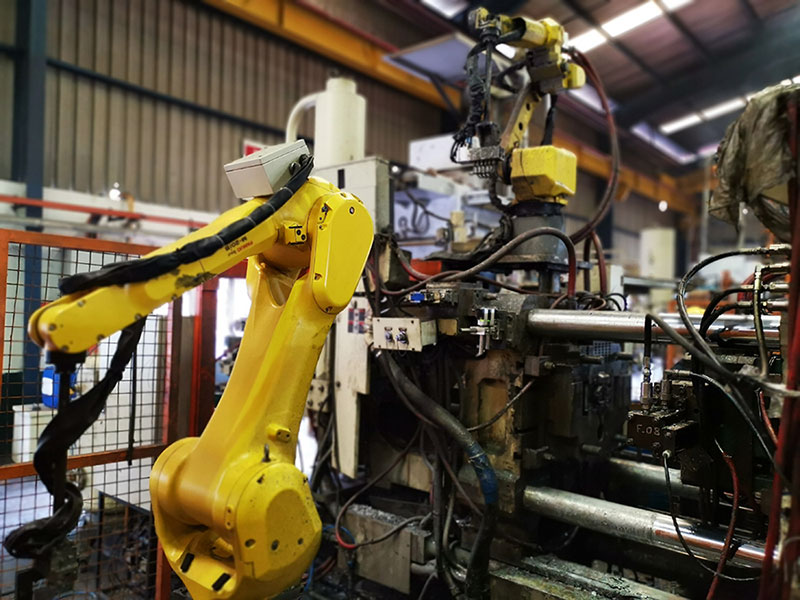Diecasting: The Backbone of Precision Manufacturing
Diecasting: The Backbone of Precision Manufacturing
Blog Article
Diecasting is a sophisticated manufacturing process that plays an vital role in creating intricate metal parts with accuracy and precision. The method involves introducing liquid metal into a cavity under high pressure, permitting the creation of exquisite shapes and intricate design that is difficult for other processes. Diecasting is widely utilized in various industries, including electronics, aerospace, automobiles and other consumer goods because of its high efficiency and capability to create high-quality parts. This article explains the intricate details of diecasting, discussing its techniques, benefits of the process, as well as its applications.
Diecasting is the process that begins by making an mold, also known as a die, which is usually made of hardened steel. The mold is constructed to stand up to the temperature and pressures that are involved in the process. After the die has been made to be used, the molten material, generally composed of aluminum zinc, magnesium, or copper is heated to an liquid state, and injected into the mold cavity under high pressure. This pressure is maintained until the metal solidifies, insuring that the solidified metal fills every part of the mold with fine details and thin walls. When the metal has been cooled and formed, the mold is opened, and the finished product is then ejected. This process allows for superior precision and consistency with the manufacture of metal parts.
One of the most significant advantages of diecasting is its efficiency in the production of mass quantities. After the dies have been made it can be repeated hundreds or thousands repeatedly with little variance between pieces. The high degree of repeatability is essential for industries that require large quantities of similar components. In addition, diecasting is renowned as an efficient material. It produces less waste than other techniques for forming metal, as excess metal can be recycled and reused. This not only reduces cost of materials but it is also a part of more sustainable manufacturing techniques. The combination of efficiency, speed, and high efficiency in the production of materials makes diecasting an attractive alternative for large-scale production.
Diecasting is also a great method of producing parts with superior mechanical properties. The speedy cooling process of molten metal through the process of casting results in a fine-grain structure, enhancing the durability and strength of the finished product. Dies makes diecast parts suitable for applications that require reliable and high-performance. For instance, in the automotive industry Diecast components are utilized in engines, transmissions, and structural elements. their weight-to-strength ratio plays a crucial role to ensure safety and efficiency of vehicles. In aerospace diecast components aid in developing lightweight but solid structures, which are crucial to optimizing the efficiency of fuel and performance. To acquire additional information please click to read more
Diecasting's capabilities extend to its wide range of applications. Within the automotive sector diecast products are employed in engines, transmissions, and structural elements, which can contribute in the reduction of weight and energy consumption of automobiles. In the electronics industry, diecasting is used to create heat sinks, housings, and connectors. This ensures optimal heat management and durability. Appliances for the home, power tools as well as toys benefit of diecasting's efficiency and precision and includes components ranging from knobs and handles as well as internal mechanism. The ability of the process to work with different metals and the ability to produce parts with intricate design make it suitable to a variety of industries, all benefiting from the unique advantages that diecasting offers.
Diecasting is a very efficacious and versatile manufacturing process which helps in creating sophisticated metal parts with the highest precision and uniformity. The ability of diecasting to produce components with fine details with tight tolerances and flawless surface finish makes it indispensable across a range of sectors, from automotive to aerospace to consumer electronics as well as beyond. Utilizing different types of materials further enhances the versatility of diecasting, allowing manufacturers to choose the most suitable alloy for their specific needs. As technology advances and the need for top-quality and affordable components increases the use of diecasting will be crucial on the manufacturing scene which will drive innovation and superiority in the field of production.